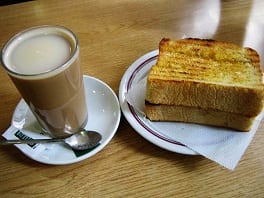A detail for coffee lovers. In Portugal the word is not used All espresso brewing methods and depending on the city, it is ordered under different names.
En Lisbon It is commonly known as a «spout»(Discharge tube in English), because the coffee machine has a spout at the end where the coffee comes out. There is also a story that tells us that in «A Brasileira», one of the oldest and most fashionable cafes in Lisbon, that it had a sign that said: «Beba Isto Com Açúcar», which means «drink this with sugar», and the acronym reads as BICA.
En PortoAsking for a 'cymbalino' is the same as asking for a 'coffee'. The name comes from the brand of a popular espresso machine, La Cimbali. Anywhere, however, no one will understand you if you order a 'coffee', and this is also true for the rest of the country, where a coffee is always served when a 'coffee' is ordered.
And among the varieties of coffee we have:
Italian
It's a short coffee, what might be known as a ristretto in other countries - the first shot of coffee from the machine. So it is short and strong as it is served in Rome.
In Brazil, this is the name of someone who lives in Rio de Janeiro. In Portugal, that means a very weak espresso: it is the second hit of the last of the espresso machine that has been served.
Crashed
This is a long, weak coffee served in a medium cup, like a teacup, which can be interesting for those who like American coffee.
Pingado coffee
An espresso with a drop of milk.
Boy
Garoto is Portuguese for "little boy," and it's a latte in a small cup. It is so named because it is used to serve children before they could have regular coffee.
Milk sock
This is a medium cup of latte (half milk, half coffee). The size of the cup is the same as the full size. Which literally means "half (cup) of milk."
Gallao
A glass with black coffee and 3/4 of milk, similar to a latte. It is served very hot and can burn your fingers when you are trying to hold it.

